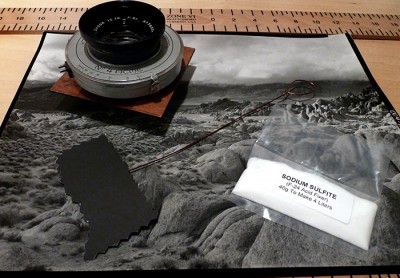 “. . . art lifts off from craft. Artist do things that craftsmen don’t know are possible.” -David Vestal-
“. . . art lifts off from craft. Artist do things that craftsmen don’t know are possible.” -David Vestal-
The photographic artist is a blend of craftsman and artist. The finished print is the interpretation the photographer has chosen to display for consideration by the viewer. This finished print is seldom a true representation of what was actually in front of the camera at the moment of exposure. The photographer chooses, through the practice of craft, to present his, or her, interpretation of what they saw and felt at that exact moment in time.
The photographer must be a master of both art and craft. There must be a confidence in the practice of the craft that allows him, or her, to be able to convey what is seen within their mind’s eye into the finished print. The technology, limited by the mechanical and chemical boundaries, must be understood and used to the best advantage, or the image will fail miserably. The craft is fused with the artistry by understanding its limitations and properties, then using them to their best advantage to create the fine art print.
Honing one’s craft allows for the seamless integration of the inherent limitations of the medium with the artistic creativity within the artist. The craft should not be evident to the viewer. The use of craft solely for the sake of craft is annoying and obvious.
Learning and mastering the craft of photography is the easy part. Craft follows the exact rules of chemistry and physics. The art of photography is the hard part. There are no rules in art. The artistic statement is simply correct when it looks right. No amount of calculation nor measurement can be applied to art. So the logical approach is to first learn, then hone one’s craft, then use that skill to its greatest advantage to create an artistic statement. Simply put, in the creation of photographic art, the craft should be invisible.
JB